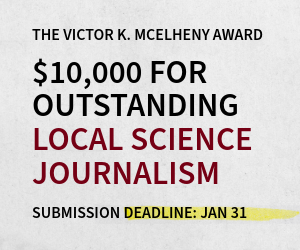By Ben Young Landis
We’re finally doing it: NASW is transitioning from Twitter.com to Bluesky as its short-form social media platform for community building.
Currently, Bluesky is a free service, but the company requires signup codes provided by existing users. To facilitate Bluesky signups for our community, we invite NASW members already on Bluesky to donate your signup codes here for your NASW member colleagues:
- Have a Bluesky signup code to donate? Want a Bluesky code to sign up? Log in with your NASW member credentials to access our Google Form entry and Google Sheet output: Update: As of Feb. 6, Bluesky no longer requires signup codes, and is free for any user to join. Thank you to the 40+ NASW members who donated 160+ codes for our colleagues to use!)
- All signed up? Now you can follow NASW on Bluesky at @sciencewriters.org
For many years, Twitter cultivated an essential digital community, especially for journalism and science professionals, helping connect practitioners, enthusiasts, and sources from across the globe. Science bloggers were early adopters of the platform — originally a microblogging-via-text messaging service — and helped drive its popularity in the ensuing decade in synchrony with the boom of digital-first news publishing.
In the present day, many in our community are reporting diminishing returns from their Twitter user experience. Likewise, as an organization dedicated to the free flow of accurate news and information and the curation of safe, welcoming convening spaces, we find it increasingly difficult to break through the platform’s changes to reach our existing and prospective audiences. The drastic dropoff in attendee live-tweets and other trends during our latest annual conference — typically a deluge of Twitter excitement and activity — demonstrates the point.
Social media platforms are ultimately at the mercy of their corporate governors. However, we are hoping that Bluesky will offer a refuge and continuation of these digital relationships we’ve long enjoyed, given the growing numbers of media and science professionals who have begun investing in that space. As such, we’ll be shifting our community-building time and energy away from Twitter — tagging, replying to, and sharing in your mentions and engagement on Bluesky instead.
Remember, NASW remains active on LinkedIn (linkedin.com/company/sciencewriters) as its long-form social media platform for community building, so please follow us there. And for those who still rely on Twitter for alerts or who haven’t opted to join Bluesky yet, we’ll still post major announcements to our @ScienceWriters Twitter feed for now, just as we do on facebook.com/sciwri
Not interested in any form of social media? Not to worry: NASW members will always have access to our news, content, and members-only information via our website, direct emails, and our member newsletter.
 (Ashley Atkinson for NASW)
(Ashley Atkinson for NASW)
Ben Young Landis is the assistant executive director of NASW and also serves as its digital, print, and social media editor.
Founded in 1934 with a mission to fight for the free flow of science news, NASW is an organization of ~ 2,800 professional journalists, authors, editors, producers, public information officers, students and people who write and produce material intended to inform the public about science, health, engineering, and technology. To learn more, visit www.nasw.org and follow NASW on LinkedIn.




